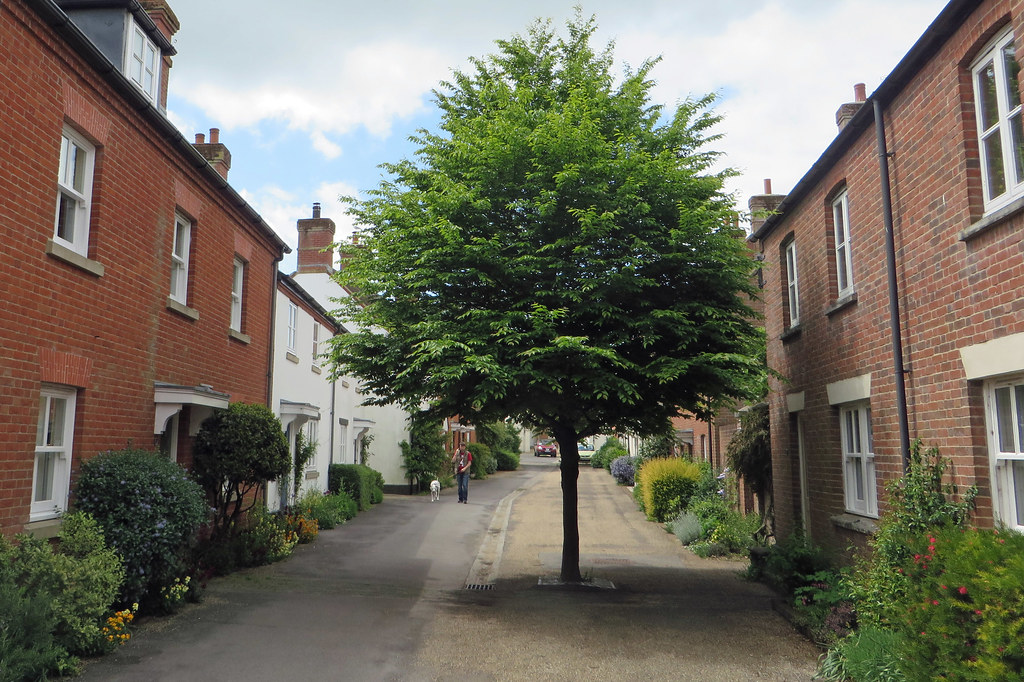Physical Address
304 North Cardinal St.
Dorchester Center, MA 02124
Physical Address
304 North Cardinal St.
Dorchester Center, MA 02124

A few weeks ago the Times reported that Lloyds Banking Group had purchased 45 new homes to let in Peterborough. This is part of a plan for Lloyds to own 50,000 homes by 2031. Given the median home in the City is now worth over 7 times the annual earnings of the typical resident, it is understandable why people would be upset. Indeed, why should a huge corporation be able to buy up all the properties in the City, when its own residents can’t afford to buy a new home there? However, this outrage is misdirected. Lloyds buying a few thousand homes over a decade will do nothing compared to the astronomical effect that NIMBYism and our planning system has had on house prices. The reason for this lies in a piece of legislation called the Town and Country Planning Act. This law abolished the automatic right to develop regulatory compliant housing, and added an additional stage of planning permission. As a result, it became mandatory for one to require state permission to build on one’s own land. Over the years this system has morphed into an almost quasi-right to block others’ construction giving residents the ability to stop others from moving into their area. This chiefly benefits homeowners – the people who engage the most in the planning system – since new houses will slow down the speed their own home’s value increases. The effect is that almost no houses get built. For example, in London during the 2010s we built around 25,000 houses per year; in the 1930s before the Planning Act was introduced that number was 61,500. Sadly housing just behaves like any other scarce asset. When there’s a shortage the sellers have more bargaining power and consumers are forced to pay more to buy the goods. […]
Prince Charles, perhaps the world’s most famous urbanist, on Dharavi, which he’s planning to replicate in either Calcutta or Bangalore: Unlike the ‘fragmented, deconstructed housing estates’ built in the West, the slum has ‘order and harmony’ he claimed, adding: ‘We have a great deal to learn about how complex systems can self-organise to create a harmonious whole.’ Though he’s got good things to say about organic development, his critiques of modern architectural styles and his habit of injecting himself into planning decisions have not earned him fans in the UK, where two years ago a group of architects actually sent him a letter telling him to shut up: Charles’s “private comments and behind-the-scenes lobbying” were anomalous in a modern, democratic system, said the letter writers, who also included Jacques Herzog and Pierre de Meuron, the Swiss duo whose practice turned the former Bankside power station into the Tate Modern, and Italy’s Renzo Piano, the co-designer with Rogers of the Pompidou Centre in Paris. […] Rogers’ proposals for the Chelsea site had already been adapted following local objections and were now in the hands of Westminster council planners, they noted. “If the prince wants to comment on the design of this, or any other, project, we urge him to do so through the established planning consultation process. Rather than use his privileged position to intervene in one of the most significant residential projects likely to be built in London in the next five years, he should engage in an open and transparent debate.” “This is not really about a style, or an argument about how buildings look, but how we go about things,” said Deyan Sudjic, the director of the Design Museum in London, who also signed the letter. “What’s slightly depressing is that this is kind of an old argument […]
The latest edition of the Atlantic Monthly features an article by John Staddon, a Professor of psychology and brain sciences at Duke University. The article discusses some of the differences in how the US and Britain regulates traffic and how there are unintended consequences to over-regulation. Distracting Miss Daisy: I began to think that the American system of traffic control, with its many signs and stops, and with its specific rules tailored to every bend in the road, has had the unintended consequence of causing more accidents than it prevents. Paradoxically, almost every new sign put up in the U.S. probably makes drivers a little safer on the stretch of road it guards. But collectively, the forests of signs along American roadways, and the multitude of rules to look out for, are quite deadly. Economists and ecologists sometimes speak of the “tragedy of the commons”—the way rational individual actions can collectively reduce the common good when resources are limited. How this applies to traffic safety may not be obvious. It’s easy to understand that although it pays the selfish herdsman to add one more sheep to common grazing land, the result may be overgrazing, and less for everyone. But what is the limited resource, the commons, in the case of driving? It’s attention. Attending to a sign competes with attending to the road. The more you look for signs, for police, and at your speedometer, the less attentive you will be to traffic conditions. The limits on attention are much more severe than most people imagine. And it takes only a momentary lapse, at the wrong time, to cause a serious accident. The tragedy of the attention commons concept reminded me of a video I recently came across on youtube called “Awareness Test.” In fact, the article refers to the […]